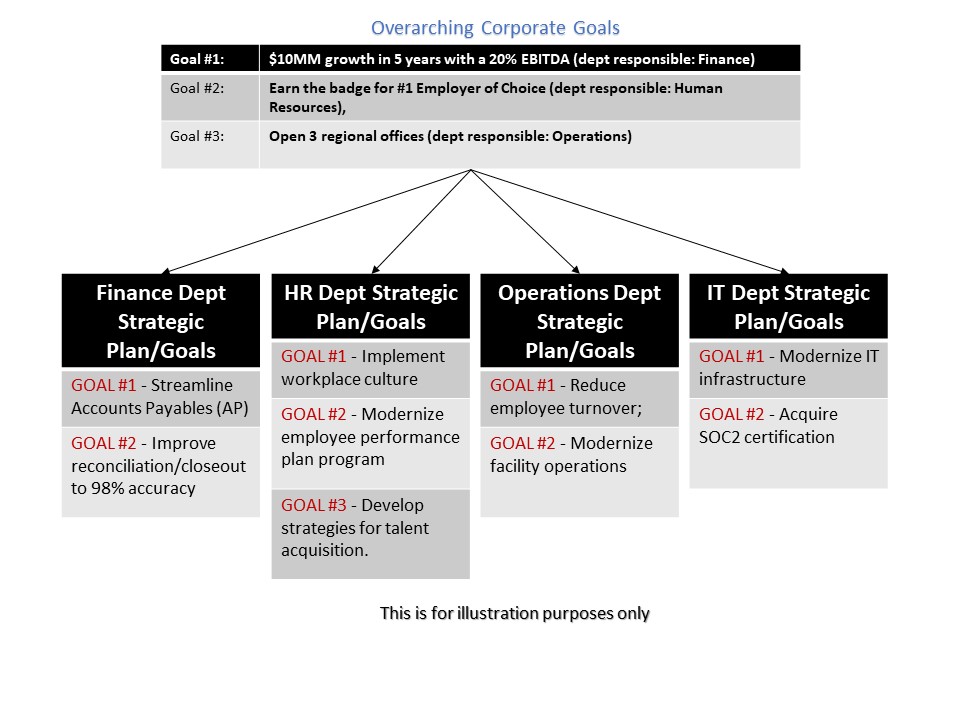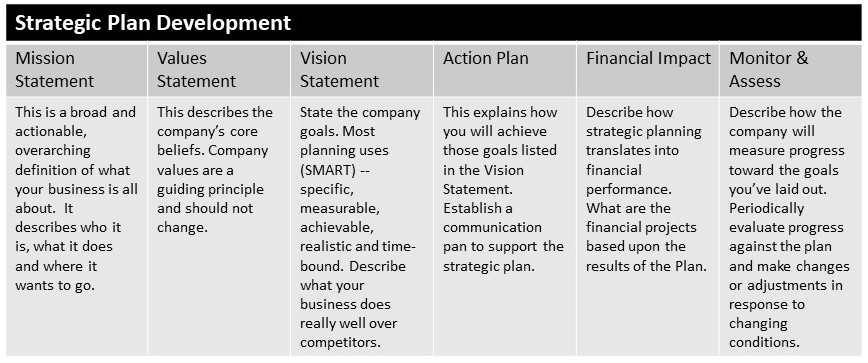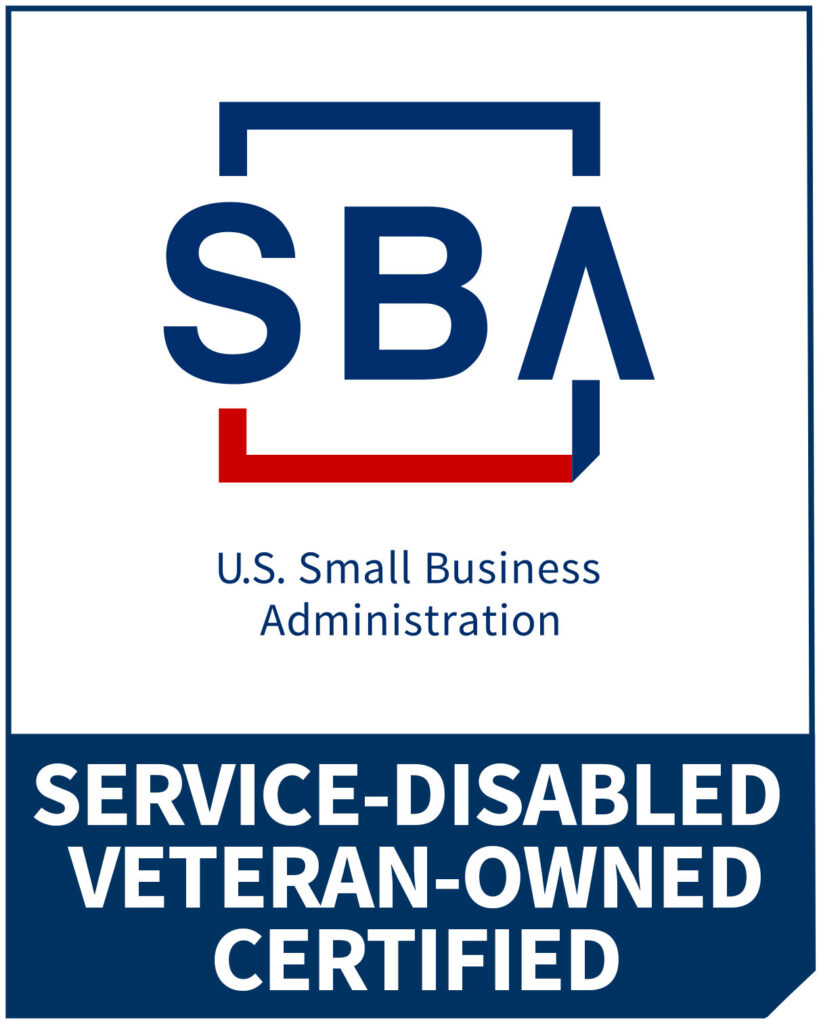Your Strategy Consulting and Implementation Partner

How long will a company continue to underperform before they say, “Just stop it”, or “Enough is enough”? Ok, now that you’ve reached your plateau of frustration, now what? How will you move the needle from underperformer to “raining down the big bucks”? One of the first documents I ask for, when working for a company, is a copy of their STRATEGIC PLAN (The PLAN). That’s when I get that confused deer in the headlights look. One would have thought I asked for the password to all the company’s bank accounts.
The typical response has always been “What’s that?”, or “I’m not sure we have one.” My follow-up question is: Do you have a document that will tell me what the company’s strategic plan is? Answer: “Yeah, we have our corporate mission and vision statement.” Great, but that’s not the same as a STRATEGIC PLAN.
Think Like A Corporation Act Like A Small Business

Small business owners may think that a strategic plan is only for large corporations, but if the small business has a desire to grow in the realm of the big boys, you will need a strategic plan. A STRATEGIC PLAN is an action plan that is designed to take a company where they want to go and includes the actionable steps that will get the company there and it will help the small business to stay on track.
As the executive and visionary, your plan should envision where your business will be several years from now, usually 3-5 years depending on the frequency of changing markets. I’ve seen some 7 to 10-year plans that included major IT modernizations and complete process reengineering. Small businesses need a vision of what they want their business to look like in the future so you can anticipate potential barriers, risks, and roadblocks.
If you think like a corporation, you will identify and value the tools and techniques corporations use to make your small business smarter and competitive.
30,000 Foot View | Strategic Plan Example
Let’s say COMPANY A has a 5-year goal “To Be a Market Leader” (in whatever market) and to accomplish this goal, the CEO has established 3 primary goals or objectives to be successful.
Overarching corporate goal: “To Be a Market Leader” (how will you be a market leader? By successfully achieving Goals 1-3)
GOAL #1 – $10MM growth in 5 years with a 20% EBITDA (dept responsible: Finance);
GOAL #2 – Earn the badge for #1 Employer of Choice (dept responsible: Human Resources), and
GOAL #3 – Open 3 regional offices (dept responsible: Operations)
What’s the plan to get all the employees and leadership onboard, marching in sync to climb this mountain? You are correct….a STRATEGIC PLAN
A STRATEGIC PLAN is not some PowerPoint slides presented to senior leaders summarized in the mission/vision statement. The STRATEGIC PLAN is a living document formally structured and written to provide every department’s role and responsibility to accomplish the STRATEGIC PLAN. The PLAN sets the foundation for all to follow. Once the PLAN is developed and signed by the CEO, it is passed on to the department executives. Finance, HR, IT and Operations will need to develop their departmental PLAN, aligned to the corporate PLAN, on how they will help the company meet its strategic goal(s). Here’s what a potential departmental strategic plan would look like (remember that departmental goals must directly answer and be aligned to the above corporate goals):

This is an example summary strategic plan from 30,000 feet, but when it’s all said and done you are probably 30+ pages deep.
Strategic plan development takes time and effort, but if a company wants to succeed in business operations, this is the starting point. A strategic plan is not a business plan, but it can be a companion document to the business plan (I have both for my company).
Steps in Developing Your Strategic Plan
The below table lays out the areas to develop in strategic planning

Don’t Just Wing It
If a company thinks they can just “wing it”, well they might as well get accustomed to being the champion “underperformer”. Winging it is a very risky proposition. I’ve worked for organizations operating their business for 25+ years (federal and local government included) and they couldn’t figure out why the company hadn’t realized the level of success desired. Some of the organizations had 7 or more different corporate Presidents, but they couldn’t shake the low employee morale syndrome, high employee turnover, team burn-out, and subpar pay with no performance bonuses, just to name a few. SIDE BAR: Performance bonuses are another topic but let me just say without it, you are fighting a losing battle. Also, don’t expect employees to go “above and beyond” for the same subpar pay. These are all attributes of high employee turnover and low employee morale.
Don’t Wave the White Flag | Be A Change Leader
In business, an environmental scan is when an executive leader scans the business or department for strengths, weaknesses, opportunities, threats, and barriers (SWOT/B) in business operations and determines where to begin to make change. Let’s face it, the only way your company will realize success as defined by the Board or the CEO, is by change. It makes no sense to have an overarching corporate goal with no STRATEGIC PLAN.

Improving Business ~ Operations ~ Performance
This content provides practical information concerning the subject matter covered and is provided with the understanding that BISM is not rendering legal advice or other professional services. BISM does not give legal advice as part of its services. While every effort is made to provide current information, the law changes regularly and laws may vary depending on the state or municipality. This material is made available for informational purposes only and is not a substitute for legal advice or your professional judgement. You should review applicable law in your jurisdiction and consult experienced counsel for legal advice.


Leave a Reply